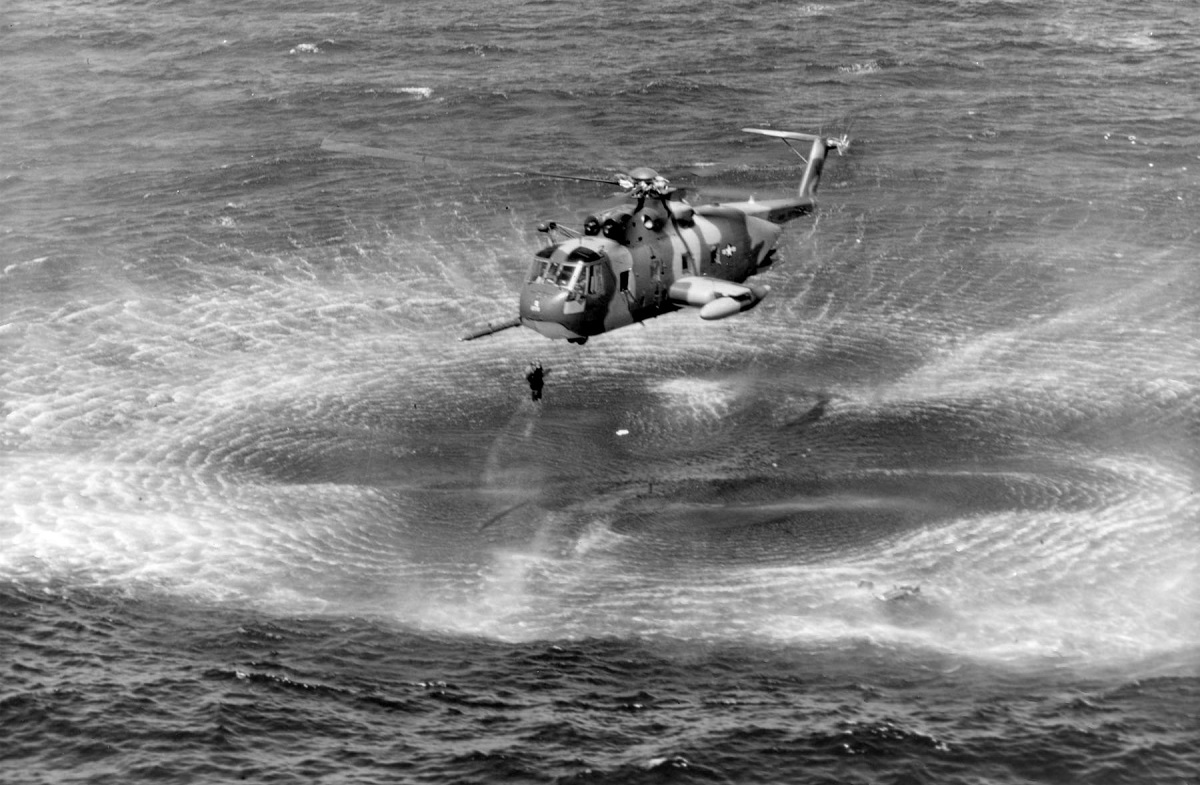With 68 bullet wounds, a shot-out windshield, and holes through the rotor blades, Jolly Green 22 managed to escape the trap
During the Southeast Asia War, the U.S. Air Force (USAF) created the Sikorsky HH-3E helicopter, sometimes known as the “Jolly Green Giant,” to undertake combat search and rescue (CSAR) to recover downed Airmen. The HH-3E, a heavily modified version of Sikorsky’s CH-3 transport helicopter, was armed and armored to defend aircrew rescue missions in dangerous environments.
With the installation of armor, defensive armament, self-sealing fuel tanks, and a rescue hoist, fifty CH-3Es were transformed into HH-3Es. The HH-3E’s watertight hull allowed it to land on the water, and its big rear door and ramp made loading and unloading simple.
In 1967, the first USAF HH-3E aircraft arrived in Vietnam and began flying out of Da Nang Air Base in South Vietnam and Udorn Air Base in Thailand.

The National Museum of the United States now has one of these helicopters on display (an HH-3E with serial number 67-14709). It is noteworthy that this HH-3E has a lengthy and illustrious history. It was assigned to the 37th Air Rescue and Recovery Squadron at Da Nang Air Base, South Vietnam, and during the Southeast Asia War, it flew with the call sign Jolly Green 22.
On March 14, 1968, a two-ship helicopter rescue team made an attempt to save the crew of an American aircraft, as detailed in the article “Jolly Green 22.” An F-4 Phantom of the US Marine Corps (USMC) was shot down over North Vietnam. Heavy enemy machine gun fire caused the rescuers to retire before saving the second Marine, who was one of the two crewmen. Despite Jolly Green 22’s damage from enemy fire, its crew made a second attempt to save the trapped Marine. The Marine had been slain in the meanwhile, and the North Vietnamese had set up an ambush for the rescuers who were coming back. Jolly Green 22 managed to escape the trap despite being heavily shot at by the enemy, suffering 68 bullet holes, a shot-out windshield, and rotor blade holes.
The helicopter’s four crew members were nominated for the Air Force Cross for their efforts, but only three of them—pilot Maj. Stuart Hoag, copilot Lt. Col. Gerald Lowe, and pararescueman Sgt. James Locker—received it. The helicopter’s flight engineer, Sgt. Dennis Richardson was awarded the Purple Heart for riskily exposing himself to enemy fire. However, after reviewing the mission’s documents, the Air Force awarded retired Chief Master Sgt. Richardson the Air Force Cross in 2008 for his bravery in 1968.
This helicopter, commonly known as “709” due to its serial number, served in Southeast Asia for 32 months, during which time the crew members were awarded one Air Force Cross and fourteen Silver Stars for heroism.

They were also given credit for saving 27 American Airmen. Following the war, “709” took part in yet another risky rescue operation in the Yellow Sea. Maj. James E. McArdle, Jr. and his team used this helicopter to rescue 28 sailors aboard the Taiwanese freighter Ta Lai after it ran aground on the night of March 30 and 31st, 1979. The HH-3E crew made three trips to deliver the Taiwanese sailors to Kwangju Air Base in South Korea while battling 15-foot waves and strong winds. McArdle was given the 1979 MacKay Trophy for this rescue, which is given to an Air Force individual or organization for their most outstanding flight of the year.
This historic aircraft was retired following Operation Desert Storm in 1991 and refurbished by the museum in 2010.
Photo by Ken LaRock / U.S. Air Force
Source: National Musuem of the U.S. Air Force



